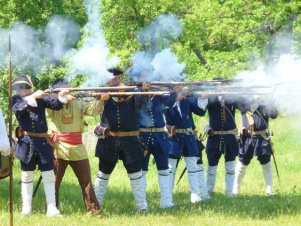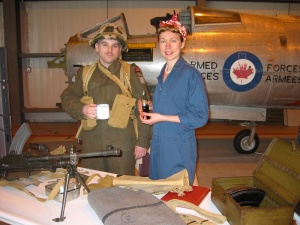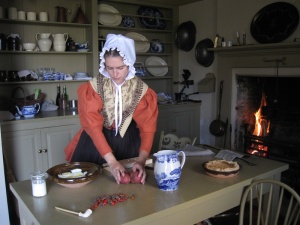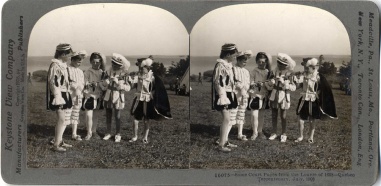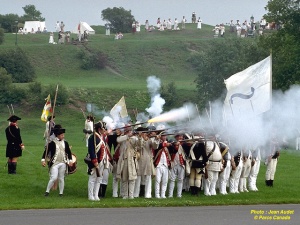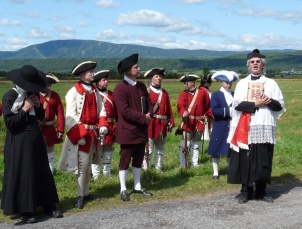Historical Reenactment: A Fascinating Hobby
par Bouchard, Evelyne
Historical reenactment, a relatively recent pastime, allows participants to immerse themselves to varying degrees in a specific historical period or event in order to experience what everyday life was like at that time (food, clothing, traditional crafts and skills, etc.). It is hard to imagine a more intimate form of contact with the past, because reenactment not only provides an opportunity to learn about history, but to feel it too. In North America and in Europe, various attempts have been made to clarify the definition of reenactment. Here is another contribution.
Article disponible en français : Reconstitution historique: un loisir passionnant
Historical Recreation
Historical recreation is a form of leisure activity devoted to history in all its guises. It encompasses everything from museum and interpretation centre visits and historically themed costume events to model building and historical reenactments. In the latter case, participants seek to recreate the atmosphere of a specific period chosen on the basis of their interests. For example, they might slip into character as a soldier on night patrol on the Normandy front in 1944, a servant in New France preparing a traditional meal over the hearth or a voltigeur at a circa 1805 bivouac. Reenactments may involve public demonstrations or may be private events held for simple enjoyment’s sake. This hobby is accessible to everybody, since participants can choose the association or group that suits them best, based on the period they are interested in and the degree of accuracy and authenticity they seek.
Historical reenactments are not the kind of activities that people attend only once, like a medieval wedding, a costumed event or a historical festival. Nor are they comparable to “Murder Mystery” dinner parties—theatrical mysteries set against a historic background—or themed camps where people pay to be costumed, fed and entertained for a weekend. During a reenactment, participants make the decisions about their activities, be it dancing, playing games, preparing food, or taking part in military training or a battle. Everything is determined on the basis of group members’ interest and level of commitment.
Reenactors, as they are called, get very involved in their hobby, often attending several events a year. Year after year, they continually add to their knowledge of the period that interests them and the characters they play. Museum interpreters, in comparison, may sometimes take part in reenactment-like activities, especially when they seek to “relive” a historical period through role play, but they are not reenactors per se, because their work imposes certain obligations and limits.
The Question of Authenticity
In European circles, at least in French, a distinction is sometimes made between historical “evocation” and “reenactment.” Evocation may be described as a form of reenactment that brings various aspects of a historical period to life, but with more give-and-take regarding authenticity. As a result, historical accuracy may occasionally take a back seat to creativity, atmosphere, and participants’ personal preferences. For example, to make these activities more accessible, participants may be permitted to wear discreetly styled modern shoes, so long as they did not contrast too sharply with their period costume.
The main purpose of such reenactments is to entertain: authenticity is not the main priority, and compromises and adaptations are accepted, not seen as obstacles to events. These kinds of activities are well suited to festivals, interactive animations and private leisure activities.
Historical Reenactment
For the neophyte, it can be hard to distinguish between an authentic “reenactment” and a more free-wheeling recreation. However, dedicated reenactors are not satisfied with simply recreating a historical setting or atmosphere. They constantly strive for the highest possible level of authenticity, regardless of their personal comfort, modern-day habits and tastes. Authentic reenactments require solid historical knowledge, backed by pertinent references and accurately reproduced material culture. In this case, not only will shoes be exact reproductions of original models, but even non-visible items like undergarments will be faithful to the historic period in question. Authentic reenactment is a very demanding hobby.
Even though reenactment (also known as living history) is primarily a form of recreation, its focused and rigorous approach clearly lends it educational value. Indeed, a number of European historians and ethnologists have discovered that reenactments provide them with a new way to understand and test their theories. Over the past 10 years, some European museums and festivals have gone out of their way to attract experienced reenactors.
Animation and Experimentation
Reenactors sometimes incorporate historical animation and experimental archaeology into their activities. Historical animation is a form of public entertainment with a historical theme. It often takes the form of sketches or demonstrations presented on a predetermined schedule. The degree of authenticity depends on the group performing. Historical animation first developed with historical recreation in the 1960s and 1970s. Experimental archaeology, for its part, is a scientific approach to understanding how historical objects were made and used. To reproduce an 18th century apron, for example, experimental archaeologists would use only documented tools, materials and techniques are allowed. In other words, an electric iron could not be used in making the apron, only an old-fashioned iron heated over a fire. Note, however, that the practice of experimental archaeology is not limited solely to the reenactment community. Experimental ethnology, a related field, adopts a similar approach to reproducing the customs and lifestyle of a given era. Animation and experimental archaeology and ethnology first developed in the 1970s and 1980s, and have been adopted by more and more reenactment groups since the late 1990s and early 2000s.
The Origins of Historical Reenactment
Costumes and metamorphoses have always been part of human culture. Medieval harvest festivals and 18th century masquerade balls are good examples. There is also a long tradition of restaging famous battles or excerpts from the lives of famous people for entertainment or educational purposes. These events were undoubtedly the first historic reenactments. The 19th century saw growing interest in a more scientific approach to history, archaeology and ethnology, as numerous books and studies were published in these fields. The upper classes, inspired by culture, would hold historic theme parties with antique, medieval or baroque period menus and costumes. Then, with the 20th century, came the development of historical commemorations and costumed pageants evoking bygone events. The 300th anniversary celebrations of Quebec City are a good example.
In those days, the public attended these major historic events and celebrations as passive spectators. It was not until the 1960s and 1970s that a new form of historic activity emerged, both in Europe and North America, in which the public was invited not only to attend, but to participate. The first reenactment associations were founded and some spectators went from being part of the audience to being active participants in living history.
In Quebec, interest in living history first manifested itself in the folk dance troupes that emerged in the 1940s and 1950s, and reached the height of their popularity in the 1970s and 1980s. However, their activities were still entertainment focused. It was not until the late 1980s and early 1990s that Quebec’s first groups of reenactors were formed. Between 1990 and 2010, the number of reenactment associations went from four or five to about fifteen. They cover themes ranging from the Middle Ages to the Second World War. If we include other groups with a historical “evocation” approach, the total number is close to 50.
The Most Popular Periods
Internationally, the most popular periods for historical reenactment are the Middle Ages—the hands-down favourite —the Napoleonic era, the American Civil War and World War II. In Quebec, the New France period draws considerable interest, but remains a distant second to the Middle Ages, which appeals primarily to hobbyists who are somewhat less concerned about authenticity. Between 80% and 90% of Quebec associations focus on the medieval period, while the remainder are devoted to other periods.
Recognition Remains Elusive
In Quebec, authentic historical reenactments remain relatively marginal. Festivals have yet to be convinced of the potential afforded by these groups of history enthusiasts, and museums are still reluctant to associate them with historical exhibitions, since the educational value of their activities is still misunderstood and even less widely recognized. Some museums also have a tendency to consider reenactors as “competitors” to their own paid interpreters. As for experimental archaeology and ethnology, they are not even on the radar. Obviously much remains to be done in Quebec to develop and integrate these relatively new forms of historical recreation, along with other interpretive and educational tools.
For those interested in historical reenactment, it can be difficult to know where to start. Potential participants must first realize that there are different levels of interpretation and historical authenticity among the various reenactment groups. In terms of choice, there are almost as many options as there are in sports and the arts. Each group has its own approach and level of historicity—and that’s not counting the multitude of periods and settings to choose from.
Historical reenactment is a hobby well worth discovering because it offers participants and spectators alike a hands-on opportunity to explore and appropriate the past. Today, more and more people are seeking meaningful and enriching all-round experiences. Historical reenactments offer an enjoyable combination of educational and recreational aspects while at the same time fostering heritage communication in a direct and profoundly human context.
Évelyne Bouchard
Director, Société d'Histoire IN
MEMORIAM
Additional DocumentsSome documents require an additional plugin to be consulted
Images
-
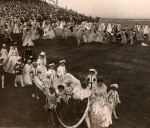 Défilé lors du tricen
Défilé lors du tricen
tenaire de Québ... -
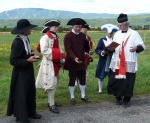 Évocation de l'inaugu
Évocation de l'inaugu
ration du Chemi... -
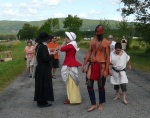 Les compagnons de Nou
Les compagnons de Nou
velle-France -
 Les compagnons de Nou
Les compagnons de Nou
velle-France
-
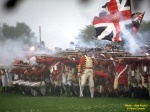 Reconstitution de bat
Reconstitution de bat
aille -
 Tricenteraine de Québ
Tricenteraine de Québ
ec en 1908 : Am... -
 Tricenteraine de Québ
Tricenteraine de Québ
ec en 1908 : so... -
 Tricenteraine de Québ
Tricenteraine de Québ
ec en 1908 : so...

